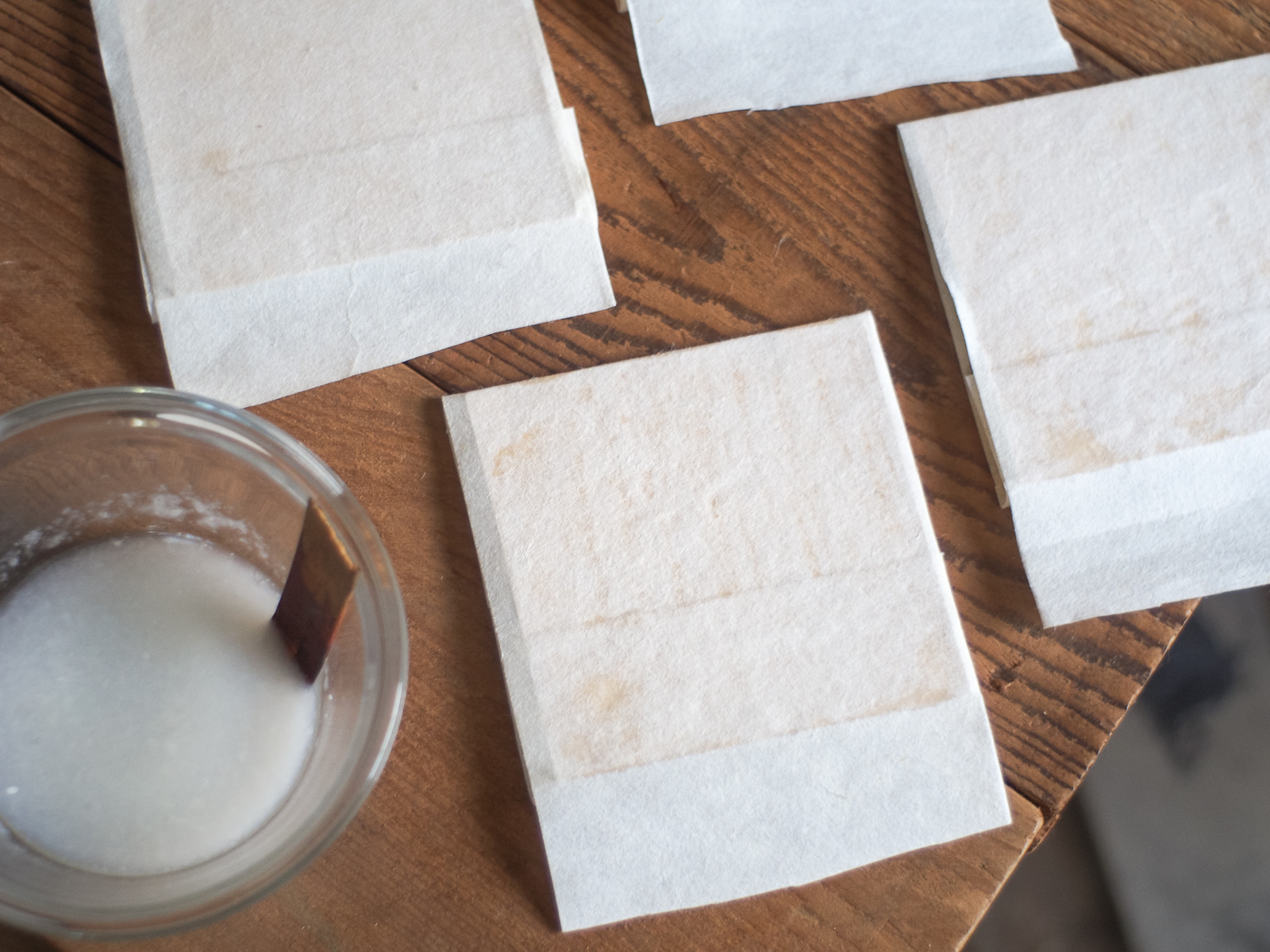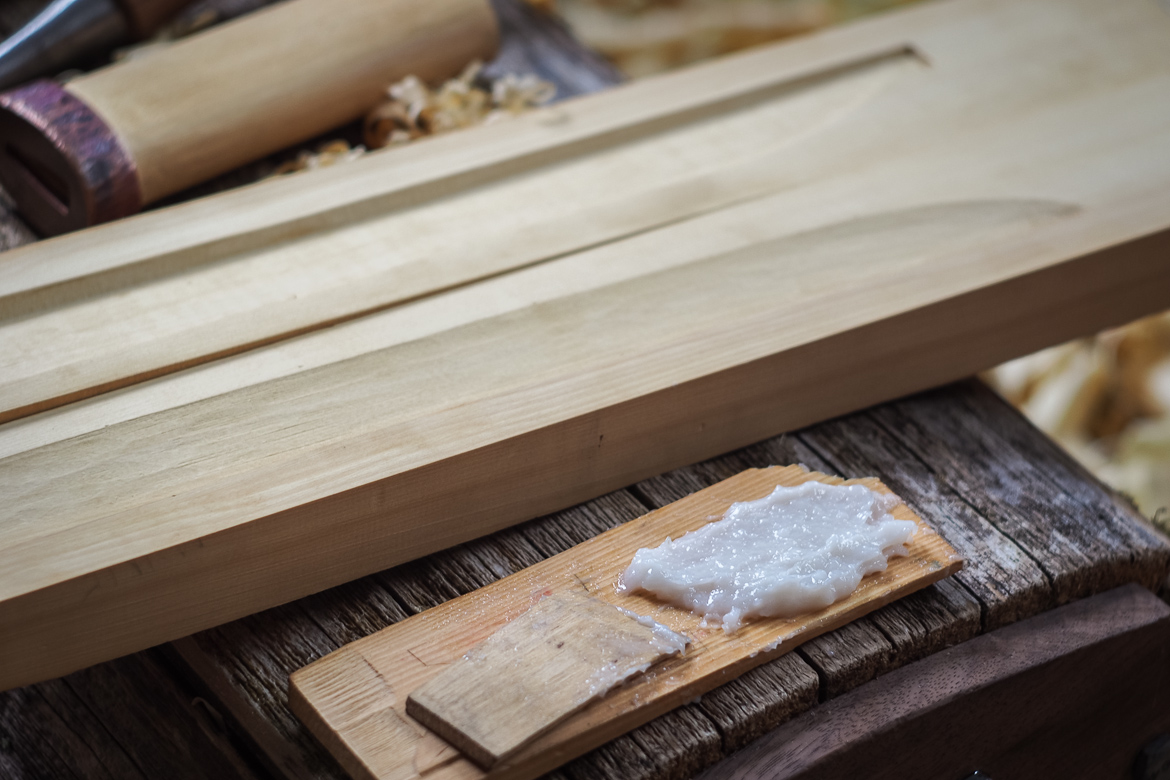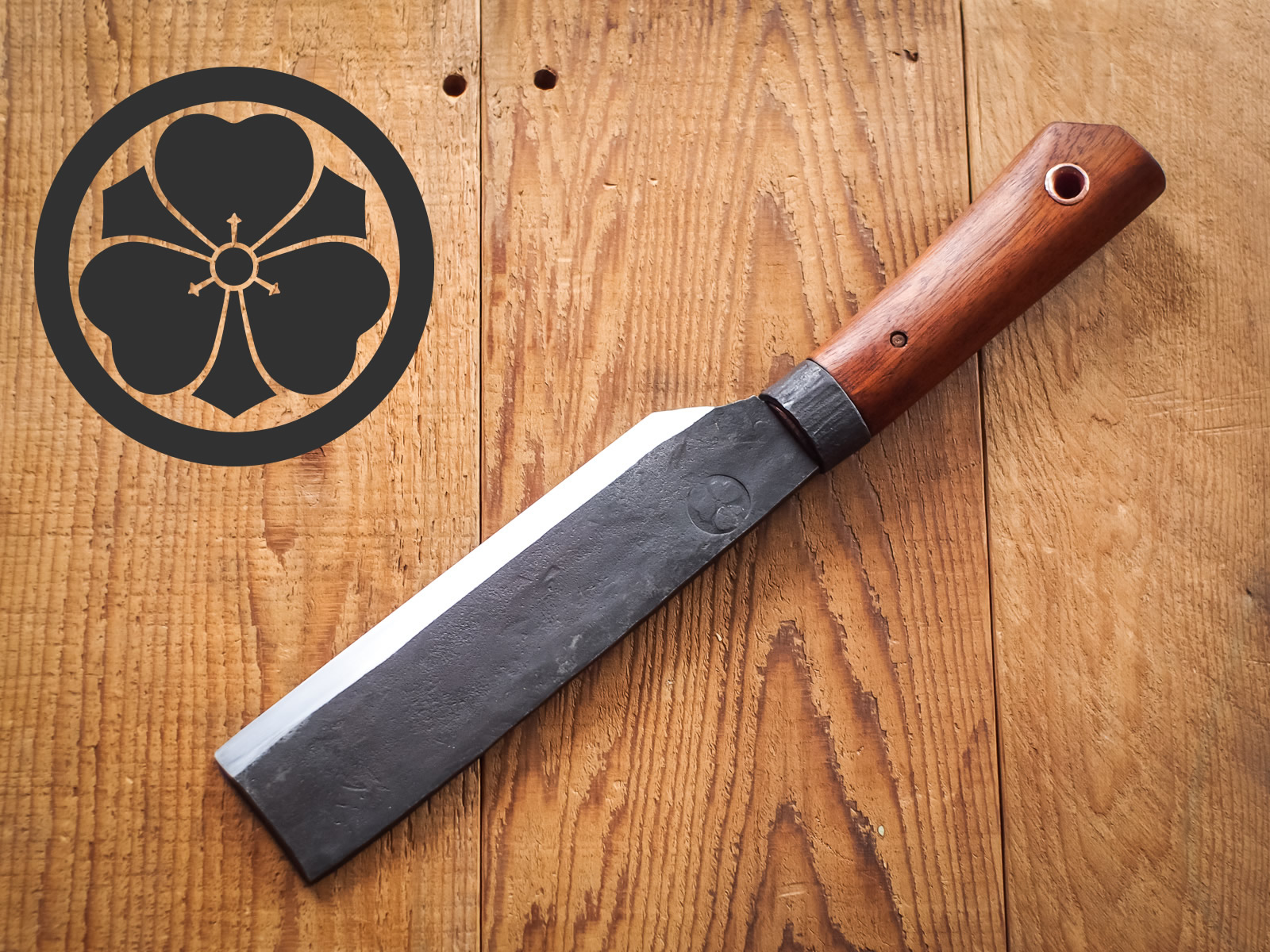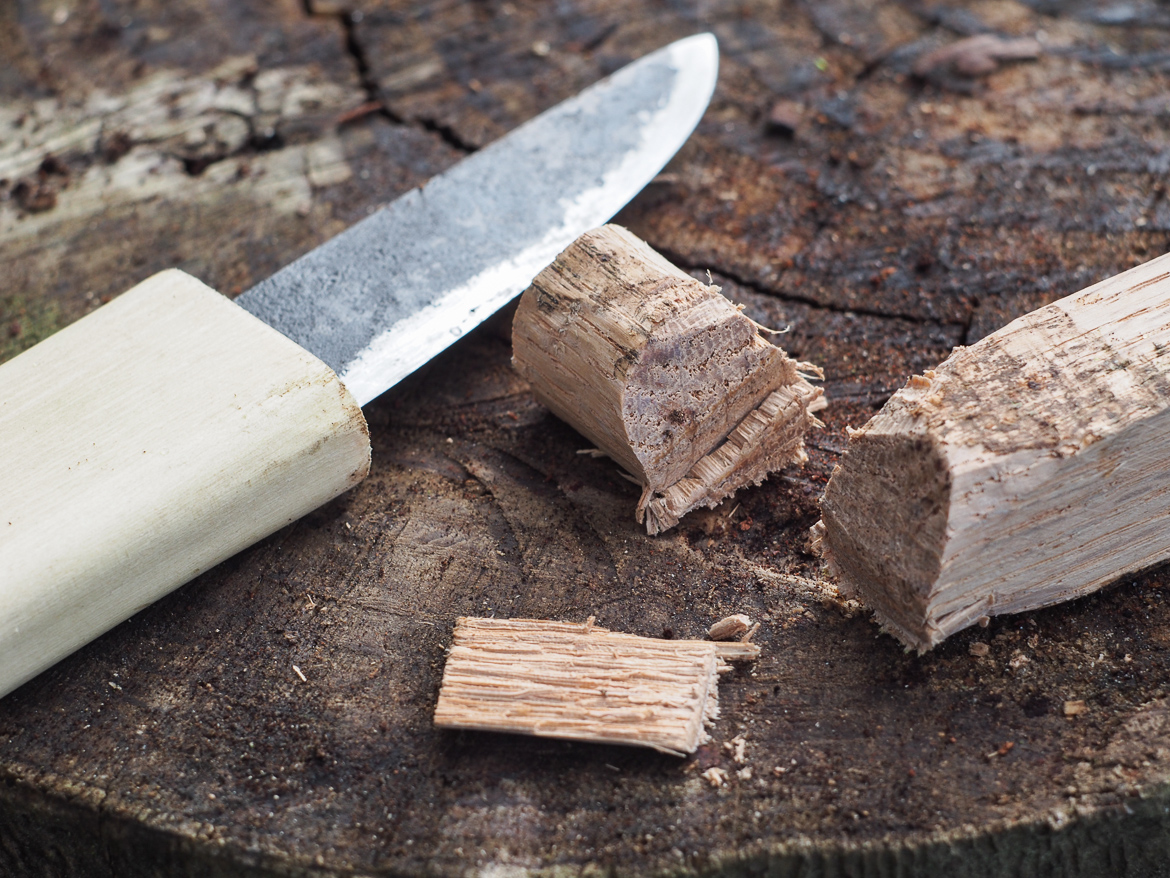-

Building a Traditional Swordsmith Forge
Traditional Japanese swordsmithing forges are purpose-built with certain design elements specific to the tasks involved in tanren and hizukuri. This article will discuss several of the features that are common to this type of construction and follow the process of crafting a swordsmith’s forge at a museum on Vancouver Island. (see the updated workspace) Most…
-

Testing Scrap Steel for Knife Making
Most of history was forged with steel that had no designated number or specified ingredient list. Historical smiths would interpret the quality and properties of steel based solely on careful observation and simple testing procedures. To this day, Japanese swordsmiths work exclusively with unnumbered steel made with charcoal and iron sand in traditional smelting furnaces.…
-

Process: Making the Mountain Kotanto
The wider profile of the mountain style kotanto is inspired by a kamakura sword and has a more deeply curved tip (fukura-tsuku) and shorter drop point. The simple and humble mounting style is inspired by the age-old style of farming and foresting tools traditionally used in managing satoyama lands. Satoyama are the managed forest areas…
-

Making Valves for Fuigo Box Bellows
Fuigo (鞴, Japanese box bellows) are among the most compact and efficient hand-powered bellows for forging work. With few complex or moving parts, they are easy to maintain and will provide years of service. Among the more technical points of construction are the four wooden flap valves, called ben (は弁), which control the direction and…
-

Making Sokui (Rice Paste Glue)
Sokui (続飯) is a simple starch-based wood glue that is traditionally used for joining wood to wood or paper to wood. Its uses span from tsuka making to sliding panel shoji and it particularly shines in joinery where it serves as a lubricant when inserting tenons as well as the adhesive to keep them in…
-

Making an Outdoor Knife
The Japanese swordsmithing tradition has been in place for generations and many of the design elements have been tested and refined for centuries. With careful study and practice, this can be a solid foundation for today’s bladesmiths and knifemakers to build their work upon. This article will provide an overview of the process and cover…
-

Making a Hatchet Handle
The second half of the antique hatchet restoration project. There are several important points that are often overlooked when choosing or crafting an axe or hatchet handle. Though not a thorough treatise on the subject, this post will briefly discuss some axe and hatchet handle design theory and recommended dimensions, and provide an overview of…
-

Making a Bamboo Water Scoop for Water Forging
Forging with a thin film of water on the anvil and hammer prevents forge scale or oxide from being hammered into the surface of the steel. The hot steel instantly vaporizes the water and the resulting steam explosion blows the scale off of the work, keeping it clean as it is worked. This type of…
-

Case Study: Making a Hon-Yaki Nata
Nata (屶, directly translated “mountain sword”, or 鉈) come in various sizes and shapes, but the type most familiar in the west does the duty of a light brush hatchet or heavy camp knife. Common characteristics include thick spines and heavy blades, often with single beveled edges similar to Japanese wood chisels. This type work…
-

Antique Hatchet Restoration
When I have time, I enjoy restoring old tools back to a more useful and beautiful state. The most fuel, energy, and time intensive part of making an axe from scratch is punching or forge welding to form the eye. When quality antique axe and hatchet heads can be found in scrap piles or at…
-

Sokui (Rice Paste Glue) Strength Testing
This is an experiment I did as part of a prototyping project, and was intended to satisfy my curiosity on the performance of sokui (続飯) or rice paste glue. The natural glue contains nothing but delicious Japanese rice and a little bit of water. Usually sokui is used as part of a system that also…
-

Testing Blacksmithing Charcoal
More about making softwood charcoal: How Charcoal is Made
-

Making Charcoal for Blacksmithing
More about making softwood charcoal: How Charcoal is Made
-

Metal Artists In Action
A two day collaborative invitational metalworking event hosted by Red Cod Forge in Nanoose Bay. We had the privilege of being on the demonstrator’s list for the first annual M.I.A (Metal artists In Action) event hosted by Dave Kasprick of Red Cod Forge. Also on the list were Jay Holbrook, a mixed media sculptor of…
-

Chopping charcoal (sumi-kiri)
More about making blacksmithing charcoal: How Charcoal is Made
